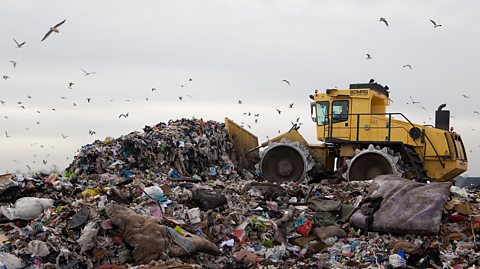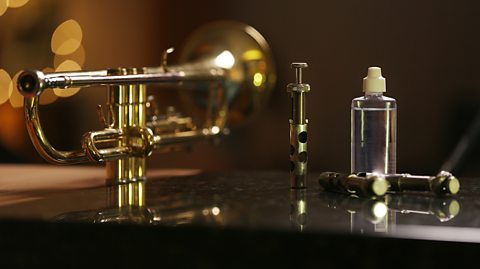
Environmental impact might not have been Pete Townshend's biggest concern when he was smashing guitars and amplifiers in the 1960s, but 50 years on he might well consider the impact of a throwaway culture before raising his guitar of choice above his head.
Deciding what instrument to play or purchase can be an emotional process with many aspects like cost and size to consider, as well as how environmentally friendly a certain instrument might be.
Improvements in technology, coupled with changes in international regulations and manufacturing processes, means it is much easier to factor in the environmental impact of a purchase of an instrument, and its eventual disposal.
Making your instrument greener could help reduce the amount of waste the UK currently generates.
In 2017, UK households produced just shy of 27 million tons of waste, equivalent to 409 kg per person.

Guitar
The majority of guitars are made from wood so the first thing to look at is whether the parts come from a sustainable resource.
In 2017 an international agreement, the Convention on International Trade in Endangered Species of Wild Fauna and Flora (CITES), brought in trading sanctions of Brazilian rosewood and other woods, because of over-felling.
Rosewood is a popular choice with North-American guitar manufacturers.
The ban has reduced the amount of guitars made of rosewood and manufacturers have begun to make more guitars from sustainable sources but they are often more expensive.
Guitar strings are subject to personal preference, and as of yet there is no easy way of recycling them.
A US string manufacturer has come up with a scheme for guitarists to send back their used-strings for credit, but there is yet to be a European equivalent.
Electric bass guitar strings can be boiled and used again but this will likely alter their playability. Six-string guitar strings can’t be cleaned in this fashion and have to be properly disposed of at a recycling centre, along with any cardboard packaging.
As for guitar amps, because solid-state amps don’t need replacement valves these are the greener choice.
Solid-state transistor amps don’t generate as much heat when being used and take up less space in a vehicle because of the different operating technology.
If you like to play with effect pedals then use rechargeable batteries or an AC power adapter, connected by daisy chains, to power your stomp boxes instead of one-time-use disposable batteries.
When using oils to take care of the fretboard and body of a guitar look for organic oils sourced from a sustainable resource.

Piano
A piano is a complex instrument to manufacture and contains lots of intricate parts from a range of materials.
Just like guitar strings, the strings in a piano are difficult to dispose of.
Inside the wooden skin of a piano is a sturdy metal frame, which acts like the piano’s skeleton and keeps the instrument from collapsing in on itself due to tension in the taut strings.
When disposing of a piano it may be an option to upcycle the wooden body and metal skeleton frame to something useful like a tabletop or bench.
An electric piano is a much greener alternative; it can easily fit in a car and be updated with new sounds.
However, most electric pianos are made of plastic and rubber, though some have wooden elements.
The internal electrical circuit boards can be dismantled for recycling.

Drum kit
Each percussion instrument in a drum kit has its own environmental impact.
The most impactful are the cymbals because of the methods involved in their manufacture.
Cymbals contain copper, tin and silver, and are exposed to extreme temperatures and industrial pressure to be bent into shape.
Like their metallic counterpart, the drum also goes through a robust manufacturing process to end up in its recognisable cylindrical shape.
Drums are either made from plastic or wood, and as long as the wood is from a sustainable source, then it is the better option in the long term.
Drum machines have been around since the early 1970s and have the functionality to continually change the produced sounds. Albeit not a drum kit in sound or presence, a drum machine is easier to transport and can be modelled to sound like the best known drums and cymbals.
Drumsticks will still be needed regardless if it's an electric or acoustic kit. Keep an eye out if the tips are either plastic or wood. Wood is preferable as long as it is from a sustainable source.
If you’d prefer to create a homemade drum kit it is possible to try rooting through scrap yards for the ingredients to make your own instrument.

Brass instruments
Once a brass instrument, like a trumpet, has been made then maintenance is fairly environmentally friendly.
However, be mindful of the amount of water used to bathe the instrument and the type of oil used to help polish the metal surface.
Instead of using petroleum and synthetic based oils there are organic oil alternatives that are non-toxic.
Woodwind instruments
Woodwind instruments need a similar amount of care to brass instruments so you should have the same level of consideration when cleaning except for one additional point of attention; use biodegradable ear buds to clear the dirt hidden under the pads and keys that change the pitch of the notes.
A vital part of a woodwind instrument is the reed, a thin material that lies against the mouthpiece, which generates the instrument’s timbre when blown.
Made synthetically or farmed, reeds have to be changed on a regular basis, once every two weeks if playing professionally, which leaves a lot of worn reeds to get rid of.
Early synthetic reeds used to depend more on plastic but this has been reduced.
Reeds that are farmed are grown in the Mediterranean, Argentina, South Africa and Australia in a stable environment, however, be sure to check that the farm does not use pesticides.
Reeds that are imported may have a larger carbon footprint than a locally sourced synthetic reed.

More from Bring the Noise
Play It!: Explore song elements or play and sing along to music
Use the three different modes to see the elements that make up a song, play or clap along with the music or make and listen back to your own version of a song. (KS1)

Gareth Malone's singing techniques
Guides on how to teach singing to primary school children (EYFS)
